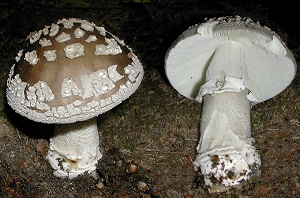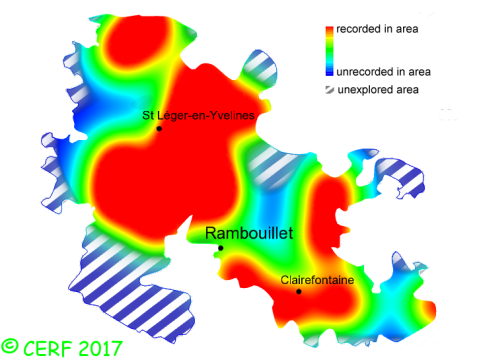| Amanita excelsa var. spissa (Fr.) Neville & Poumarat |
|
|
|
|
|
|
The cap is mouse grey to dark brown, fleshy, convex then expanded; its margin is smooth (not striated). The cap surface is covered with irregular grey patches or warts, arranged in geographical maps, not viscid nor sticky. The stem is white, with small concentric scales under the ring and towards base, deeply buried in the ground, bulbous, onion-shaped, with veil debris, not always perceptible, and a persistent membranous white and striate ring. The flesh is white, unchanging, sometimes reddening in the base; its taste is mild, faint, of radish; the odour is faint, of aniseed, then unpleasant, of radish; its texture is fibrous. The gills are white, free, crowded (nb of gills per 90° ~ 36 ). The spore print is white. This species is mycorrhizal. It grows on the ground, on a clayey soil, in deciduous or coniferous woods (more frequently with conifers), on a rather non calcareous soil, with spruce, beech. The fruiting period takes place from June to November.
Chemical tests : flesh becoming purple when in contact with sulphuric acid. Distinctive features : Grey to dark brown cap, with a non furrowed margin, topped by grey (not white) and flat (not warts) floury scales which are irregularly arranged and may be washed out by rain; flesh unchanging or slightly reddening in bulbous stem base; stem deeply rooting and with slender base; ring furrowed Amanita excelsa var. spissa is frequent and widely present in the forest of Rambouillet, and is frequent, more generally speaking . | ||
|
page updated on 14/01/18

